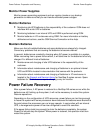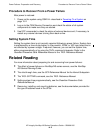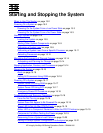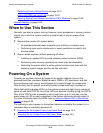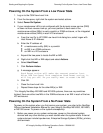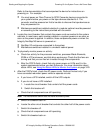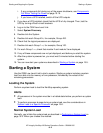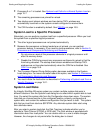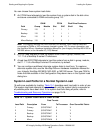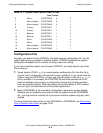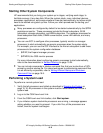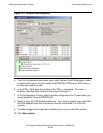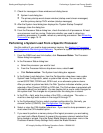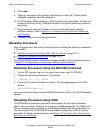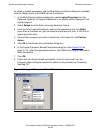
Starting and Stopping the System
HP Integrity NonStop NS-Series Operations Guide—529869-005
15-6
Loading the System
•
Processor 0 or 1 is loaded. See System Load Paths for a Normal System Load on
page 15-7.
•
The remaining processors are primed for reload.
•
Two startup event stream windows and two startup TACL windows are
automatically launched on the system console configured to receive them.
•
The CIIN function is enabled by default. See CIIN File on page 16-5.
System Load to a Specific Processor
Alternately, you can perform a system load from a specified processor. When you load
the system from a specified logical processor:
•
The other logical processors are not primed automatically.
•
Because the processors not being loaded are not primed, you can perform
processor dumps, if necessary. If you need to dump processors, refer to Section 9,
Processors and Components: Monitoring and Recovery.
°
Do not prime or reset all the processor elements in a logical processor until
after the memory dump.
°
Disable the CIIN file to prevent any processors configured to reload in that file
from being reloaded. The startup event stream windows and Startup TACL
windows are not launched automatically when the CIIN file is disabled. See
CIIN File on page 16-5.
•
The Processor Element Dump Setting option becomes available in the System
Load dialog box. For more information about this option, see Section 9, Processors
and Components: Monitoring and Recovery.
•
You must initiate the load action as described in Performing a System Load From a
Specific Processor on page 15-11.
System Load Disks
An Integrity NonStop NS-series system can contain multiple system disk pairs in
different locations. Use the System Load dialog box to select which system disk to load
from. You select the system disk from the Configuration drop-down menu. The system
load disk you choose must be in the configured location, properly configured as a
system disk, and contain the software configuration that you want to load. The system
disk that you load from starts as $SYSTEM. Any alternate system disks start using
their alternate name.
After you select a system load disk, the Disk Type box indicates whether you’ve
selected a Fibre Channel (FCDM) or SCSI disk. The Path window is populated with
information about four load paths. You can double-click on a row to make changes.
However, the changes do not persist after the dialog box is closed.



